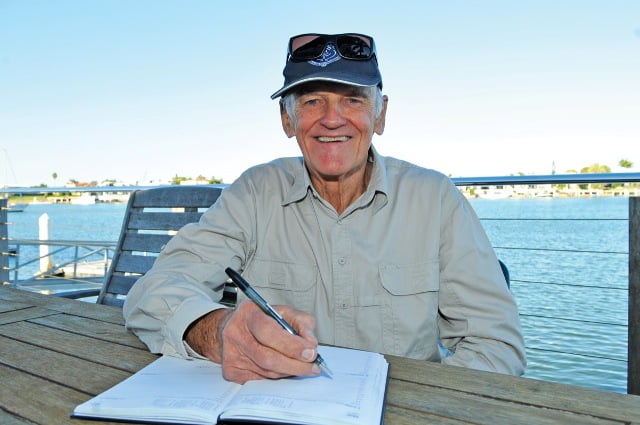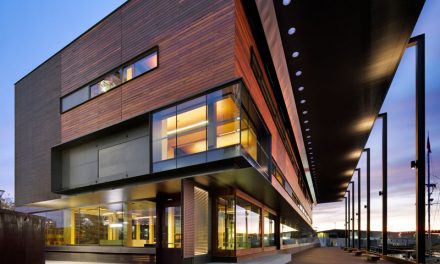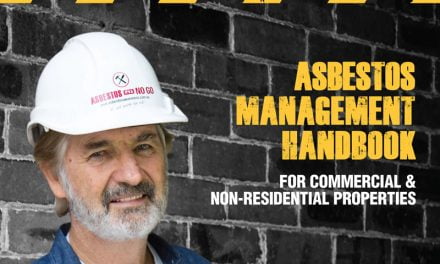GREG KING: ROSS, HOW LONG HAVE I KNOWN YOU?
Ross Raynor: It’s got to be 20 years.
GK: SO, WHEN DID YOU START IN THE TIMBER INDUSTRY OR THE FRAME AND TRUSS INDUSTRY?
RG: Started in the frame and truss industry in 1971. That was our first truss plant adventure.
GK: AND WAS THAT UP HERE ON THE SUNSHINE COAST?
RG: No, that was in Darwin, Northern Territory, and prior to that I was in the building industry working for myself from the late 60s. But earlier than that I was working for one of the big construction companies from Queensland, so I had a background in heavy construction. Not really in houses particularly, although in the late 60s I got thrown in at the deep end and had 157 houses that I was supervising for a firm.
GK: YOU STARTED IN BUSINESS IN 1971, WAS THAT ALWAYS THE PATHWAY YOU INTENDED?
RG: Yes, I believe so. In fact, I worked for myself from the mid-60s onwards. A pal of mine and I were subcontracted for a building over on a place called Elcho Island which was off the coast of Arnhem Land. We built the school and a few houses over there on Elcho Island for the Methodist mission.
We were there for just on a year. We came back to Darwin and continued on with subcontracting and eventually got a small commercial and industrial building company going with another bloke. Then I met Yvonne.
It was 1971, and she was a bookkeeper for one of the local accounting firms. I made her an offer she couldn’t refuse, which was to come and sort out the mess of the books at our struggling construction company. She did a very good job.
GK: AND HERE WE ARE 45 YEARS LATER! SO YOU DECIDED TO MARRY HER?
RG: We got married a little while after that.
GK: HAD YOU SET UP IN DARWIN AT THAT STAGE?
RG: Yes, I came from Queensland and went to Darwin originally in 1961, back then I was just a 19-year-old apprentice. The company, Barclay Brothers in Brisbane, asked me to go up there and I kind of got stuck there, more or less, for 30 years off and on.
GK: THE FRAME AND TRUSS INDUSTRY IN 1970, WHEN YOU STARTED YOUR BUSINESS, WAS A HELL OF A LOT DIFFERENT TO WHAT IT IS NOW. .
RG: Certainly.
GK: YOU WOULD HAVE USED HARDWOOD, TOO.
RG: Yes, it was all either West Australian and Kauri and so forth, or it was Malaysian hardwoods. There were no softwoods used in those days in the Northern Territory. And there wasn’t really any local timber.
GK: HOW DID YOU GET STARTED IN TRUSSES
RG: Well, one of the housing projects that I was supervising were bringing roof trusses, if you can believe such a thing, from Western Australia (WA). On ships!
GK: SO, ROOF TRUSSES?
RG: They didn’t really exist in Darwin as such in a nailplated truss format. Prior to getting them from WA, readymade, we were building on site using plywood gussets and big clout nails.
Other than that with the roofs that we did for the Northern Territory Housing Commission, I was supervising a mixture of Northern Territory houses which were elevated on high stumps, and the others were the little brick, ‘dog box’ type of houses.
GK: IN HOSE DAYS, THERE WASN’T INDIVIDUAL HOUSE DESIGNS, IT WAS ALL THE SAME. WERE YOU BASICALLY A PRODUCTION LINE?
RG: Yes we were Greg, that’s sums it up very well. Because the Northern Territory had houses that hadn’t been elevated. They just had about half a dozen designs.
Anyway, that’s how it was, and we even made them in this tiny, weeny little shed that we had in the backyard of our building operation. We used to make them at night. I had guys who did them on contract, $3 a truss and that included carrying them up a plank onto the back of an eight-tonne truck, and laying them because they were so low pitched.
GK: SO WHAT WAS THE BUSINESS THEN, NORTHBUILT TRUSS?
RR: Yes, Northbuilt, that’s right. The building company that we had, in conjunction with another bloke, was called Northbuilt. We called ourselves ‘The Better Builders’. Then in 1971, we were making roof trusses,
of course.
GK: WELL, LET’S TALK ABOUT THE MOST SIGNIFICANT THING THAT HAPPENED, WHICH WAS CYCLONE TRACY. TRACY WAS ON CHRISTMAS DAY, 1974. SO YOU’D BEEN GOING FOR THREE YEARS AT THIS STAGE, AND ALL OF A SUDDEN THERE’S NO HOUSES LEFT. YOU HAD A PASSION TO REBUILT DARWIN. DID YOU STILL HAVE A PLANT?
RR: No it was blown to hell, blown to blazes. And there were cartons of melted cardboard boxes, with nail plates strewn everywhere – all over the ground. The building didn’t exist. So we had to whack that back together as quick as we could, and didn’t worry about building approvals or doing anything. We just had to get back to business.
GK: SO WHEN DID YOU DO YOUR FIRST TRUSS AFTER THAT?
RR: After the cyclone? Almost immediately.
GK: WITHIN WEEKS?
RR: Yes, for sure. The major hold up, Greg, was there was no code. The authorities and Whitlam had this great idea that they were going to move Darwin further inland from the coast. Most people, who could make their own decisions, decided “Well, stuff you, we’ll just get on with it and rebuild our own homes”.
GK: I BELIEVE IT WAS MAJOR GENERAL STRETTON. HE ACTUALLY PULLED ALL OF THAT TOGETHER.
RR: Believe it or not, he was gone by News Year’s Eve. It took months to get a code in place.
Yvonne Raynor: It took 18 months to get a code.
RR: As much as anything else, we were still Northbuilt. Nortruss came later. We got on to a company in Brisbane, that I had gotten to know pre-cyclone, I think, who did prefabricated houses.
We were selling these little houses and they were designed to be a temporary house, and would get moved from out of the backyard eventually (where we worked on them).
The idea was that in the rural areas, 20, 30 or 40 miles down the track, you were getting out of the immediate cyclone area anyway. So the fact that we didn’t necessarily have a code didn’t matter much, because it was well known amongst the engineering fraternity that the code would be around 50 metres per second.
That’s what you had to do to get going, we just couldn’t wait for the code to come.
GK: OVER THE NEXT FEW YEARS, YOUR BUSINESS GREW. SO NORTRUSS BECAME A REALITY, RENAMED IF YOU LIKE, BUT FOCUSED IN THAT TRUSS DIRECTION. THAT WAS IN THE LATE 70S?
RR: Yvonne and I floated away from the partnership of Northbuilt. We opted out of that, very amicably with this wonderful bloke. He was 20 years my senior. But he wasn’t really interested in trusses at all.
He didn’t think there was anything good about it. Yvonne and I went off with the roof trusses. Which soon became Nortruss.
GK: SO WHEN DID YOU GO FROM BEING JUST BASED IN DARWIN TO HAVING A BUSINESS ON THE SUNSHINE COAST?
RR: That happened in 1978.
GK: SO EVEN BEFORE YOU GOT INVOLVED WITH MULTINAIL IN 1981, YOU’D ACTUALLY OPENED A BRANCH DOWN HERE ON THE SUNSHINE COAST?
RR: Yes. When we opened here, and we certainly went with Multinail.
GK: YOU DEVELOPED A VERY SUCCESSFUL FRAME AND TRUSS BUSINESS ON THE SUNSHINE COAST, JUST AT A TIME WHEN THIS WHOLE AREA EXPLODED WITH BUILDINGS.
RR: That was ’78. We hit the market at the absolute right time. We’d made the move down here whilst leaving Darwin still running. But Darwin was in the doldrums. The market had gone down.
GK: DID YOU BUY A BUSINESS HERE?
RR: No, we bought an old fertiliser warehouse in Yandina. I moved with Yvonne and the kids into the weigh bridge office, and we lived in that for two years.
GK: IT WAS A MASSIVE AMOUNT OF SPACE FOR A FRAME AND TRUSS BUSINESS. HOW LONG DID IT TAKE YOU BEFORE YOU REACHED FULL CAPACITY IN THOSE WAREHOUSES, OR DID YOU START ADDING WAREHOUSES TO IT?
RR: Well, no. It was only one three-acre piece of land, we didn’t really build anything much, and we just reworked the old building a little bit. Our second truss plant down here, which is over at Coolum, didn’t start until 1989. We had 18-acres of land, and used just under half of it.
GK: SO, ROSS, WHEN DID YOU BECOME INTERESTED IN ENGINEERING? I SUPPOSE YOU GOT YOUR BUSINESSES TO A STAGE WHERE THEY WERE EASILY MANAGED BY OTHER PEOPLE. BUT YOU’VE ALWAYS HAD A PASSION FOR ENGINEERING, HAVEN’T YOU?
RR: I’ve always been a mechanic, or tinkerer, even since I was a kid. Building gnat cars and the gnat car craze swept through rural Australia back in the 60s.
I built my first gnat car with a 500 cc, motorbike engine in the back of it, when I was 15 in Western Queensland.
And, when I got into the truss and frame industry, it just grabbed me straight away that there were just so many things we were doing that were very labour intensive, slow as a wet week, and there must be a better way of doing it. I had to come up with a way when I saw an incredible nailplate.
So I went back to Darwin in ’75, and I had to come up with a four-bladed saw that could cut centre line to make the webs that I needed. I used four radial arm Nolex saws, and put them on scissor quadrants that I kind of dreamed up, that gave me centre pointing and enabled me to cut four angles. Two angles per-end on my webs. Then I built a couple of four-bladed centre pointing cord cutting saws, and so forth, for myself. It just rolled on from there.
GK: BUT ALL OF THAT WAS BASICALLY FOR YOURSELF, FOR YOUR OWN BUSINESSES?
RR: Absolutely.
GK: SO SOMEWHERE ALONG THE LINE, YOU MADE A DECISION THAT YOU WERE GOING TO GIVE THE THINGS YOU’D PERFECT A GO, AND START A MACHINERY BUSINESSES.
RR: We had a need to do sophisticated, hip-grooves that had these fancy angles for all sorts of weird and wonderful bungalow-types of homes. ‘Gold Coast Houses’ I used to call them.
You’d have half-hex ends on lounge rooms, and there was nothing really out there that could do that. There was a machine on the market that could do a double-wider cut, but you couldn’t change the included angle.
The included angle was always at a total of 90 degrees, no matter what you did. We came up with a machine where you could change the included angle, as well as the different roof pitch angles.
That was the MIT-R-PRO machine. Somebody saw one of those, and before I knew it Jim Cheeney came along. We got chatting at the first Frame Australia event in Melbourne, 1998.
GK: SO TELL ME, WHEN DID YOU SELL NORTRUSS?
RR: We sold Nortruss Queensland. Because by that time, by the early 1990s, we were heavily into builder’s hardware, particularly in the Northern Territory. We sold the Queensland operation in 2004 to Simmons from Toowoomba.
GK: SO THAT WAS 11 YEARS AGO?
RR: Yes, 11 years and a year or so, or 18 months later, then we sold the Darwin operation.
GK:AND WHAT WAS THE NAME OF YOUR MACHINERY COMPANY?
RR: That was called Truss Quip.
GK: YOU HAVE NOW, AT 73 YEARS OF AGE, MADE A DECISION TO RETIRE. WHAT’S YOUR DEFINITION OF RETIREMENT? I’M INTRIGUED ABOUT WHAT YOU WILL DO NOW AFTER AN INCREDIBLY ACTIVE 60 YEARS.
RR: I can say that it isn’t easy. Yvonne says to me sometimes, “If you didn’t get up and go to the workshop each day, you wouldn’t know what to do with yourself,” and I said “That is a bit of a problem, I will admit”.
GK: YOU DEVELOPED TREMENDOUS RESPECT IN THE INDUSTRY, ROSS. YOU WERE ABLE TO TRANSCEND THE BITTER DIVIDE THAT WAS OCCURRING IN THE 80S AND 90S, AND EVEN IN THE EARLY 2000S, BUT EVERYBODY STILL HAD TREMENDOUS RESPECT FOR YOU.
RR: Well, thank you for that. I made the decision that everyone should have access to whatever it was that I was designing and producing. I wasn’t prepared to, even if any of the three nailplate companies had really tried to push me towards it, but I was determined – I was not going to give it to only one company.
GK: THE INDUSTRY’S BEEN GOOD FOR YOU. AND YOU’VE BEEN GOOD FOR THE INDUSTRY. DON’T BE TOO HUMBLE ABOUT IT. I’VE KNOWN YOU FOR A LONG PERIOD OF TIME, AND I’VE NEVER HEARD A BAD WORD AGAINST YOU.
RR: Thank you. I can say, I think, that I’ve always believed in trying to help people, first and foremost.
GK: IF THEY RANG YOU UP, THEY’D BE ON THE PHONE FOR HALF AN HOUR.
RR: That’s true, and they’d usually get bored! But I’ve never been one to just try and sell them what they don’t want. I try to sell people what they should have, and if it wasn’t what they had I would tell them.
GK: THE EXCHANGE OF IDEAS WAS A VITAL PART OF WHAT HOW YOU BUILT YOUR BUSINESS. THE OPPORTUNITY TO HELP PEOPLE WAS PARAMOUNT IN YOUR DELIVERY.
RR: It was our motto. ‘We care, it’s your guarantee’. That came from the Nortruss days, not from the Truss Quip days, but it was always the same philosophy. When we were looking for a slogan, that’s the one that I came up with.
GK: CONGRATULATIONS ON A WONDERFUL CAREER ROSS. ARE YOU GOING ANYWHERE?
RR: I hope to do a lot of travelling. Well, Yvonne and I have done a fair bit anyway. We do love travel, particularly to Europe. We’ll be going again in late August-September.











